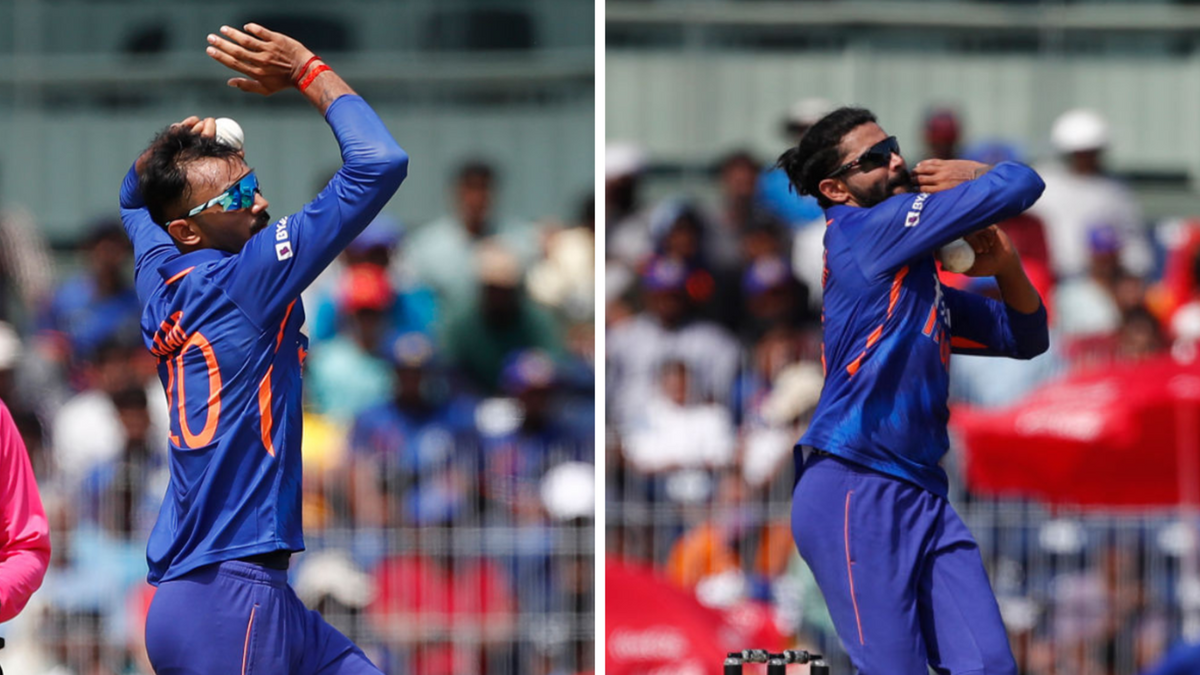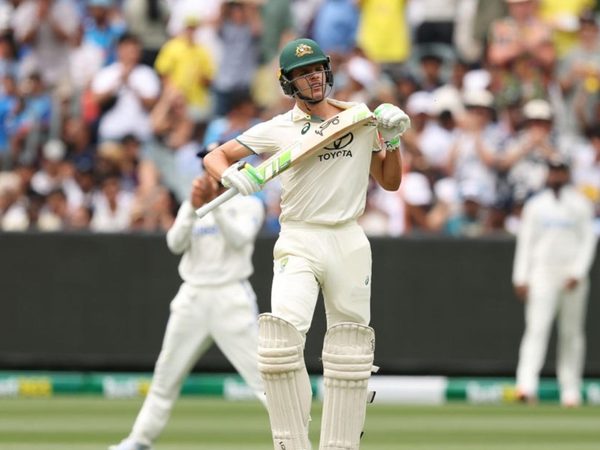
As the ODI World Cup draws closer, India have a choice to make for the spin all-rounder role between Axar Patel and Ravindra Jadeja. Naman Agarwal examines who India should go with.
What do Yuvraj Singh and Sanath Jayasuriya have in common? They won the Player of the Tournament the last two times the men’s World Cup was played in the sub-continent. While it might be coincidental that both were left-handed batters who bowled left-arm orthodox, what is surely not coincidental is that they were spin-bowling all-rounders – arguably the most important type of cricketer in the subcontinent.
In Axar Patel and Ravindra Jadeja, India have two seemingly similar types of cricketers who have the potential to play pivotal roles in the upcoming ODI World Cup. There are, however, some subtle and some not-so-subtle differences between the two. While they might be vying for the same spot in the India ODI XI, it is important to look at what these differences are before reaching a conclusion.
High-level comparison
The general perception over the years has been that Axar is the better bowler while Jadeja is the better batter between the two, especially when it comes to white-ball cricket. Jadeja has scored more than 2,500 ODI runs at an average of nearly 33 and a strike rate of just above 85, while Axar has fewer than 500 runs at an average under twenty and a strike rate just above a run-a-ball.
On the bowling front, Jadeja has taken 191 ODI wickets at just under five runs per over, while Axar has taken 58 wickets at around four and a half runs per over. Axar’s wickets have also come at a better average (31.4 compared to Jadeja’s 37.4) and a better strike rate (41.6 compared to Jadeja’s 45.6).
However, those trends have changed recently.
Axar’s upturn with the bat
Since the start of 2023, Axar Patel has played four Test matches, five ODIs, and fifteen T20s at the time of writing. In these games, he has scored 712 runs combined at an average of 44.5. Before this year, he used to average 19.38 with the bat across international cricket and the IPL combined.
Axar’s increasing returns with the bat have not been limited to one format either. He was India’s second-highest scorer in the Border Gavaskar Trophy earlier this year, scored two important half-centuries in the ODIs against the West Indies and Bangladesh last year, and scored his first T20I half-century, a counter-attacking lone hand of 65 from 31 deliveries against Sri Lanka earlier this year.
In the IPL too, he has continued his good run with the bat, scoring more than 250 runs at a strike rate of nearly 140. If not for Delhi Capitals’ poor usage of his batting abilities, he could have had close to 400 runs so far in IPL 2023.
Jadeja’s declining pace-hitting and non-existent spin-hitting
If Axar’s stocks with the bat have risen in the last year or so, Jadeja’s have nose-dived in limited-overs cricket.
Forever known as someone who couldn’t convert his batting potential at the domestic level to international cricket, Jadeja seemed to have turned a corner during the 2016 season in red-ball cricket, and in 2020 in limited overs. In 2020, he scored 223 runs at an average of 55.8 and a strike rate of 98.7 in ODIs, 54 runs at a strike rate of 192.9 in T20Is, and 232 runs at a strike rate of 172 in the IPL.
It was his pace-hitting that took everyone by surprise. During IPL 2020, he had a strike rate of 205 against fast bowlers, which rose to 218.5 at the death. Finally, it felt like Jadeja, the limited-overs finisher had arrived. However, it has proven to be a bit of a false dawn.
Since last year, Jadeja has scored at a strike rate of 57.5 in ODIs, 139.7 in T20Is, and 123.26 in the IPL. None of them are impressive enough for someone who consistently bats at No.7. His strike rate against fast bowlers has dropped to 134.6 in the IPL since last year, signalling a clear decline in his pace-hitting abilities. And as far as batting against spin is concerned, Axar trumps Jadeja by acres.
Axar has an average of 49.8 and a strike rate of just above 100 against spin in his ODI career, while Jadeja averages 44.1 and strikes at 71.5 runs per hundred balls in ODIs.
Reversal with the ball in IPL 2023
As the numbers above suggest, Axar has gone past Jadeja the limited-overs batter in the last year or so. On the bowling front, however, IPL 2023 has seen somewhat of a reversal of fortunes. Jadeja has been having a brilliant season with the ball, having already picked up 16 wickets from 13 games, while Axar has managed only ten wickets in 11 innings. Axar has, however, been more economical than Jadeja.
Who fits into the ODI side better?
Jadeja’s experience and his mini-resurgence with the ball might be tempting factors to place him ahead of Axar in the pecking order, but Axar in his current form, will provide a lot of options and flexibility to the Indian ODI XI. With no Rishabh Pant in the middle order, Axar can be floated up when required and can be relied on to take on spin, unlike Jadeja. He can also hold his own at the death against fast bowlers and play the finisher’s role at No.7.
With the ball, Axar can also be used inside the Powerplay against teams whose top orders are susceptible to spin. Jadeja doesn’t offer that luxury (only 1.4% of his overs in ODI cricket have come inside the first ten overs).
There’s also a potential opportunity for both of them to feature in the XI together as they did in a couple of ODIs against Australia just before IPL 2023. However, if India have to pick one in the XI for the ODI World Cup, unless there’s a drastic change in fortunes in the next few months, it should be Axar Patel.








